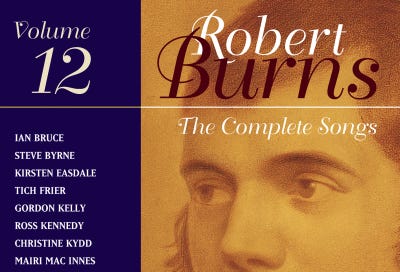The Complete Songs of Robert Burns
It took 244 years, but now we can hear them all!
Note: Like other non-travel posts in this section, this one is drawn from my book, MusicScapes of Scotland: Vignettes from Prehistory to Pandemic, compiled and revised based on 24 years of music colu…
Keep reading with a 7-day free trial
Subscribe to Scotland's Music, Landscape & Events to keep reading this post and get 7 days of free access to the full post archives.


